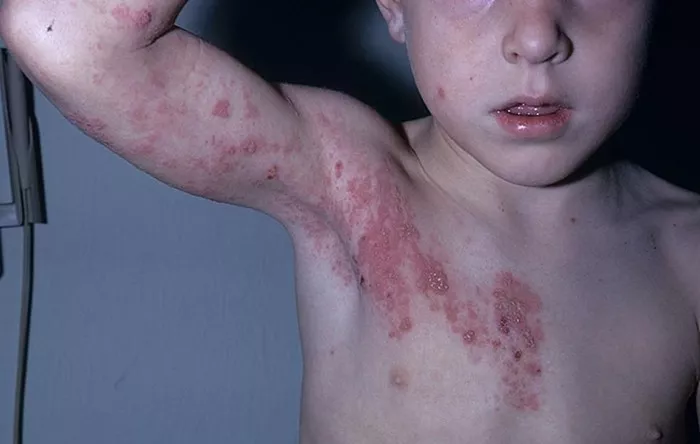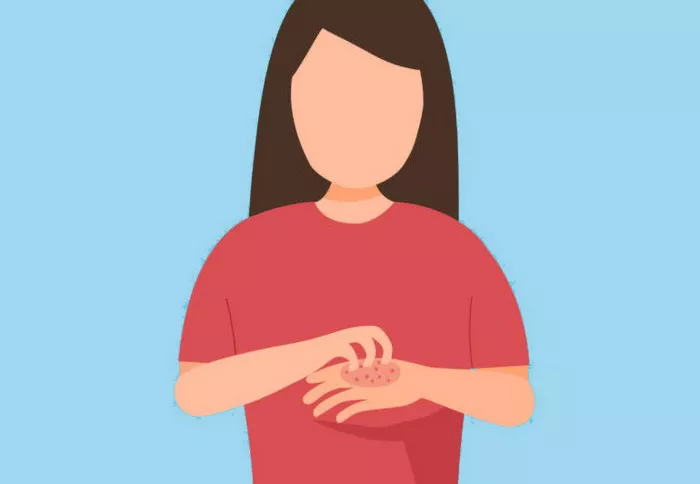Shingles, also known as herpes zoster, is a viral infection that causes a painful rash. It is important to understand how shingles spreads, particularly if you are caring for someone with the condition or have it yourself. This article will explain how long shingles is contagious, how it spreads, and what precautions to take.
What Is Shingles?
Shingles is caused by the varicella-zoster virus, the same virus that causes chickenpox. After a person recovers from chickenpox, the virus lies dormant in the nerve cells. Years later, it can reactivate and cause shingles.
Shingles is characterized by a painful rash, usually on one side of the body or face. The rash often blisters and can be very uncomfortable. Along with the rash, some people experience other symptoms such as fever, fatigue, and headache.
How Does Shingles Spread?
Shingles can spread through direct contact with the rash. When someone has shingles, they can pass the virus to someone who has never had chickenpox or has not been vaccinated against it. However, shingles cannot be spread through sneezing, coughing, or casual contact.
Direct Contact
The primary way shingles spreads is through direct contact with the fluid from the blisters. If someone comes into contact with the fluid and has not had chickenpox or the vaccine, they can develop chickenpox, not shingles. This is an important distinction.
Indirect Contact
The virus does not spread through objects or surfaces. You cannot get shingles from someone simply by touching their clothes or bedding. The virus must be transferred directly from the rash to the skin of another person.
How Long Is Shingles Contagious?
Shingles is contagious from the time the rash appears until all the blisters have crusted over. This typically takes about 7 to 10 days. Here is a breakdown of the timeline:
Initial Symptoms
Prodromal Phase: Before the rash appears, some people experience early symptoms, such as pain, itching, or burning. This phase can last from 1 to 5 days. During this time, the virus is not yet contagious.
Rash Development
Rash Appearance: Once the rash develops, it begins as red patches. Over the next few days, these patches turn into blisters filled with fluid. At this stage, the virus is contagious. It is crucial to avoid close contact with others.
Blistering Phase
Blistering: The blisters usually form clusters. They are painful and may cause discomfort. Shingles is contagious during this entire period. This phase generally lasts about 3 to 5 days.
Crusting Phase
Crusting Over: Eventually, the blisters will break and form scabs. This is when the virus begins to lose its ability to spread. The contagious period ends when all the blisters have crusted over. This typically occurs 7 to 10 days after the rash first appears.
Full Recovery
Healing: Even after the blisters have crusted over, it may take a few weeks for the skin to fully heal. However, the risk of spreading the virus significantly decreases after the blisters crust.
Who Is Most at Risk?
While anyone can contract shingles if they have had chickenpox, certain groups are at higher risk. These include:
Older Adults: People over the age of 50 are more likely to develop shingles.
Immunocompromised Individuals: Those with weakened immune systems are at higher risk.
People Under Stress: High levels of stress can trigger shingles outbreaks.
Preventing the Spread of Shingles
If you have shingles, taking precautions can help prevent spreading the virus to others.
Isolate Yourself
Stay Home: Avoid going to work, school, or social events until the blisters have crusted over.
Limit Contact: Keep your distance from vulnerable individuals, such as pregnant women, newborns, and those with weakened immune systems.
Cover the Rash
Keep it Covered: Use a bandage to cover the rash and minimize contact with others.
Hygiene Practices: Wash your hands frequently, especially after touching the rash.
Avoid Certain Activities
Avoid Swimming: Do not go swimming in pools or hot tubs until the rash is healed.
Avoid Exercise: Limit physical activities that may cause sweating or chafing on the rash.
Vaccination
Getting vaccinated against shingles can reduce your risk of developing the condition. The shingles vaccine is recommended for adults over 50. It can help prevent shingles or lessen the severity if you do get it.
Types of Vaccines
Shingrix: This is a newer vaccine that is highly effective. It is given in two doses, usually 2 to 6 months apart.
Zostavax: This is an older vaccine, but it is still effective. It is a single-dose vaccine.
Benefits of Vaccination
Vaccination not only helps protect you but also helps reduce the spread of the virus. If you are vaccinated and do develop shingles, the symptoms are often milder.
When to Seek Medical Attention
If you suspect you have shingles, it is important to consult a healthcare provider. Early treatment can help reduce the severity and duration of symptoms.
Signs to Watch For
Severe Pain: If the pain is unmanageable, seek medical help.
Worsening Rash: If the rash spreads or becomes infected, contact a healthcare professional.
Signs of Complications: Symptoms like vision problems or neurological issues should prompt immediate medical attention.
Conclusion
Understanding how shingles spreads and how long it is contagious is essential for managing the infection. Shingles is contagious from the time the rash appears until the blisters have crusted over, usually about 7 to 10 days. Taking precautions, such as isolating yourself and practicing good hygiene, can help prevent the spread to others. Vaccination is also a key preventive measure that can help protect against shingles and its complications.
If you have any concerns or symptoms of shingles, do not hesitate to seek medical advice. Early intervention can make a significant difference in your recovery and reduce the risk of complications.
Related topics:


























